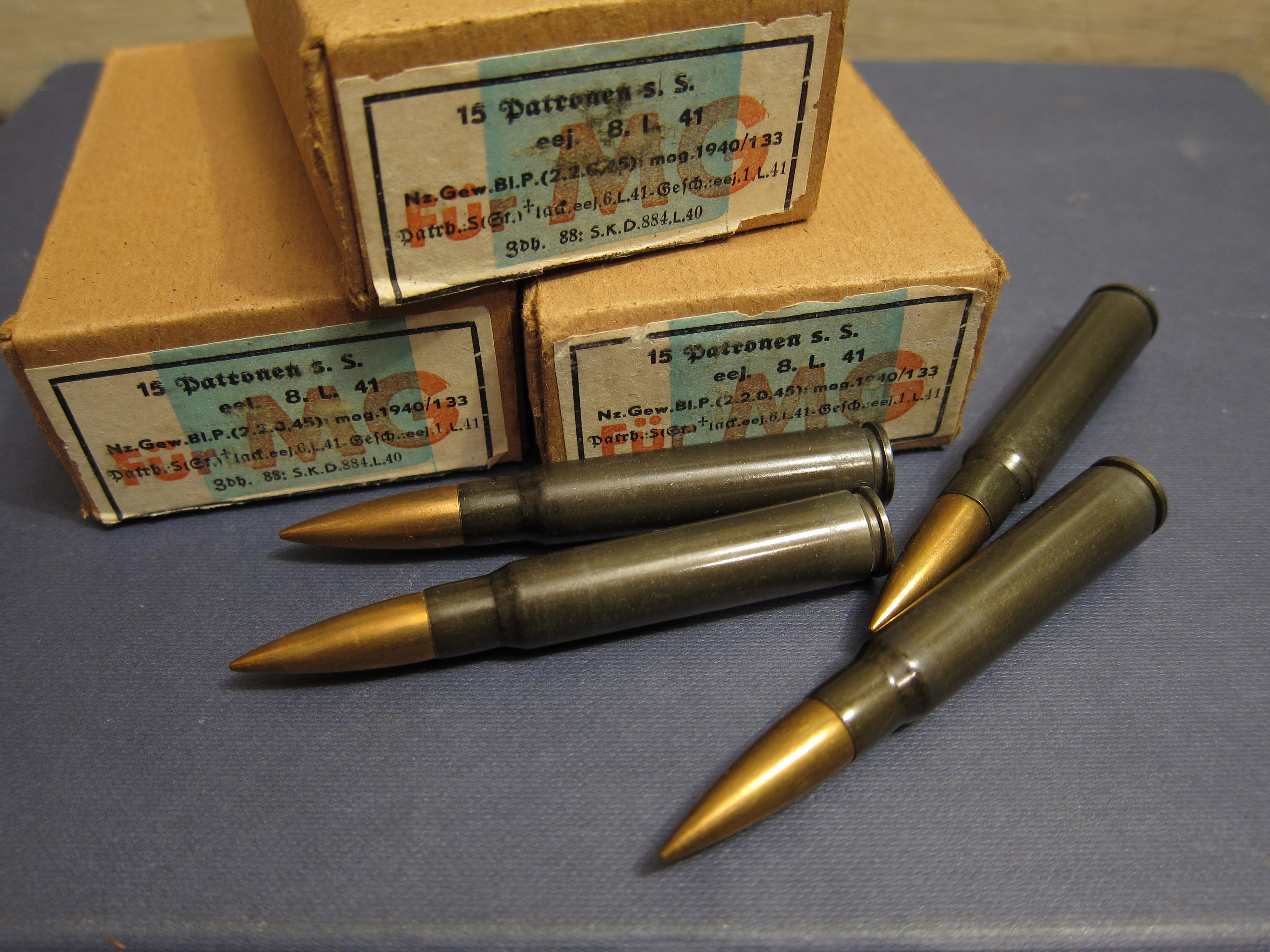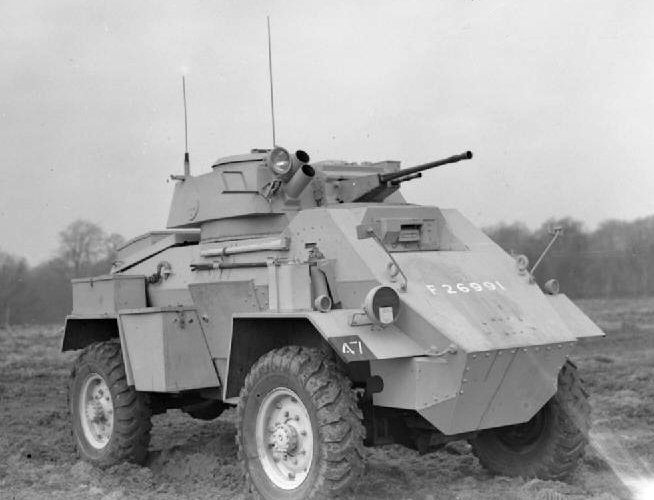Besa Machine Gun on:
[Wikipedia]
[Google]
[Amazon]
The Besa machine gun was a British version of the Czechoslovak ZB-53 air-cooled,
 Although British forces used the .303 in rimmed round for rifles and machine guns, the ZB-53 had been designed for the German
Although British forces used the .303 in rimmed round for rifles and machine guns, the ZB-53 had been designed for the German  The Mark II version entered service in June 1940, modified with a selector to give a high rate of fire (750–850 rounds per minute) for close combat or focused targets or a low rate of fire (450–550 rounds per minute) for long-range combat or area targets. The design was modified to be more rapidly and economically produced and three simplified models, the Mark II*, Mark III and Mark III*, entered service in August 1943. The Mark II* was a transitional model designed to use the new simplified parts but was compatible with the Mark II. The Mark III and Mark III* versions did away with the rate selector and had simplified parts like the Mark II* but were incompatible with the Mark II. The Mark III had a fixed high rate of fire (750–850 rpm) and the Mark III* had a fixed low rate of fire (450–550 rpm)
The earlier wartime Mark I, Mark II and Mark II* versions of the Besa 7.92 mm were declared obsolete in 1951 and all Mark III versions were converted to Mark III*. The Mark III/2 introduced in 1952 was a conversion of the Mark III* with a new bracket and body cover. The later Mark III/3 introduced in 1954 was a conversion of the Mark III/2 that replaced the barrel and sleeve and made the gas vents larger on the gas cylinder to make it easier to use belts of mixed ammunition. The post-war Mark III/2 and Mark III/3 remained in service until the late 1960s.
The Mark II version entered service in June 1940, modified with a selector to give a high rate of fire (750–850 rounds per minute) for close combat or focused targets or a low rate of fire (450–550 rounds per minute) for long-range combat or area targets. The design was modified to be more rapidly and economically produced and three simplified models, the Mark II*, Mark III and Mark III*, entered service in August 1943. The Mark II* was a transitional model designed to use the new simplified parts but was compatible with the Mark II. The Mark III and Mark III* versions did away with the rate selector and had simplified parts like the Mark II* but were incompatible with the Mark II. The Mark III had a fixed high rate of fire (750–850 rpm) and the Mark III* had a fixed low rate of fire (450–550 rpm)
The earlier wartime Mark I, Mark II and Mark II* versions of the Besa 7.92 mm were declared obsolete in 1951 and all Mark III versions were converted to Mark III*. The Mark III/2 introduced in 1952 was a conversion of the Mark III* with a new bracket and body cover. The later Mark III/3 introduced in 1954 was a conversion of the Mark III/2 that replaced the barrel and sleeve and made the gas vents larger on the gas cylinder to make it easier to use belts of mixed ammunition. The post-war Mark III/2 and Mark III/3 remained in service until the late 1960s.
 A larger, heavier – at – 15 mm version (also belt-fed) was developed by BSA from the Czechoslovak
A larger, heavier – at – 15 mm version (also belt-fed) was developed by BSA from the Czechoslovak
The ZB-53, heavy machine gun model 37
– in Czech
Accessed 29 November 2007 * David Boy
Other British Tank Armaments
wwiiequipment.com 1 January 2009
15х104 Vz.38/Варианты
{{Weapons of Czechoslovakia 7.92×57mm Mauser machine guns Machine guns of the United Kingdom Medium machine guns Tank guns World War II machine guns World War II weapons of the United Kingdom Czechoslovakia–United Kingdom relations
belt-fed
upright=1.35, An M60 machine gun belt loaded with 7.62×51mm NATO cartridges, aboard a U.S. Navy">7.62×51mm_NATO.html" ;"title="M60 machine gun belt loaded with 7.62×51mm NATO">M60 machine gun belt loaded with 7.62×51mm NATO cartridges, aboar ...
machine gun (called the TK vz. 37 in the Czechoslovak army"TK" from ''těžký kulomet'' "heavy machine gun"; "vz" from ''vzor'' "Model").
The name came from the Birmingham Small Arms Company
The Birmingham Small Arms Company Limited (BSA) was a major British industrial combine, a group of businesses manufacturing military and sporting firearms; bicycles; motorcycles; cars; buses and bodies; steel; iron castings; hand, power, and ma ...
(BSA), who signed an agreement with '' Československá zbrojovka'' to manufacture the gun in the UK. The War Office
The War Office was a department of the British Government responsible for the administration of the British Army between 1857 and 1964, when its functions were transferred to the new Ministry of Defence (MoD). This article contains text from t ...
ordered the weapon in 1938 and production began in 1939, after modifications.
It was used extensively by the armed forces of United Kingdom during the Second World War as a mounted machine gun for tanks and other armoured vehicles as a replacement for the heavier, water-cooled Vickers machine gun
The Vickers machine gun or Vickers gun is a water-cooled .303 British (7.7 mm) machine gun produced by Vickers Limited, originally for the British Army. The gun was operated by a three-man crew but typically required more men to move and o ...
. Although it required a rather large opening in the tank's armour, it was reliable.
Development and use
 Although British forces used the .303 in rimmed round for rifles and machine guns, the ZB-53 had been designed for the German
Although British forces used the .303 in rimmed round for rifles and machine guns, the ZB-53 had been designed for the German 7.92×57mm Mauser
The 7.92×57mm Mauser (designated as the 8mm Mauser or 8×57mm by the SAAMI and 8 × 57 IS by the C.I.P.) is a rimless bottlenecked rifle cartridge. The 7.92×57mm Mauser cartridge was adopted by the German Empire in 1903–1905, and was the Ge ...
round; referred to by the British as the 7.92 mm. The British had intended to move from rimmed to rimless ammunition but with war imminent, wholesale change was not possible. It was considered by BSA and the Ministry of Supply that the industrial, technical and supply difficulty of converting the design to the .303 round would be more onerous than retaining the original calibre, especially given that the chain of supply for the Royal Armoured Corps was already separate from the other fighting arms of the British Army
The British Army is the principal land warfare force of the United Kingdom, a part of the British Armed Forces along with the Royal Navy and the Royal Air Force. , the British Army comprises 79,380 regular full-time personnel, 4,090 Gur ...
and the round was not changed for British production. Since the Besa used the same ammunition as Germany used in its rifles and machine guns, the British could use stocks of captured enemy ammunition, albeit without the ability to use their ammunition belts as packaged. While American-produced armoured cars or tanks would have been fitted with .30 cal Browning machine guns, many British tanks and armoured cars were equipped with the Besa machine gun fed from non-disintegrating disposable 225-round steel metal-link belts.
15 mm Besa machine gun
 A larger, heavier – at – 15 mm version (also belt-fed) was developed by BSA from the Czechoslovak
A larger, heavier – at – 15 mm version (also belt-fed) was developed by BSA from the Czechoslovak ZB-60
The ZB-60 was a heavy machine gun designed by Zbrojovka Brno in Czechoslovakia during the 1930s. Weapons acquired after the German occupation of Czechoslovakia in March 1939 were taken into Wehrmacht service as the 15 mm FlaMG 39(t); Former Y ...
heavy machine gun as vehicle armament. It could be fired in semi-automatic mode as well as fully automatic. It was introduced in British service in June 1940 and was used on the Light Tank Mk VI
The Tank, Light, Mk VI was a British light tank, produced by Vickers-Armstrongs in the late 1930s, which saw service during the Second World War.
Development history
The Tank, Light, Mk VI was the sixth in the line of light tanks built by Vi ...
C and on armoured cars
Armored (or armoured) car or vehicle may refer to:
Wheeled armored vehicles
* Armoured fighting vehicle, any armed combat vehicle protected by armor
** Armored car (military), a military wheeled armored vehicle
* Armored car (valuables), an arm ...
such as the Humber Armoured Car
The Humber Armoured Car was one of the most widely produced British armoured cars of the Second World War. It supplemented the Humber Light Reconnaissance Car and remained in service until the end of the war.
Development
The Guy company did n ...
Marks I–III. Over 3,200 15 mm Besa were manufactured until it was declared obsolete in 1949. It fired a bullet from a cartridge with a muzzle velocity of at a rate of 450 rounds per minute. The 15 mm Besa was fed from 25-round metal belts, which limited its practical rate of fire, although the weapon was usually used for single shots as it was difficult to fire accurately in automatic.David Fletcher (1989). ''Universal Tank: British Armour in the Second World War – Part 2''. HMSO. . p.20
See also
*Bren gun
The Bren gun was a series of light machine guns (LMG) made by Britain in the 1930s and used in various roles until 1992. While best known for its role as the British and Commonwealth forces' primary infantry LMG in World War II, it was also use ...
– another ZB design taken up by the UK
References
;Notes ;Citations ;BibliographyThe ZB-53, heavy machine gun model 37
– in Czech
Accessed 29 November 2007 * David Boy
Other British Tank Armaments
wwiiequipment.com 1 January 2009
External links
* https://web.archive.org/web/20120322211957/http://www.churchilltank.com/Home_Page/THE_BESA_MACHINE_GUN.html * http://en.valka.cz/viewtopic.php/t/32150 * https://web.archive.org/web/20160304051457/http://www.municion.org/15/15x104Besa.htm15х104 Vz.38/Варианты
{{Weapons of Czechoslovakia 7.92×57mm Mauser machine guns Machine guns of the United Kingdom Medium machine guns Tank guns World War II machine guns World War II weapons of the United Kingdom Czechoslovakia–United Kingdom relations